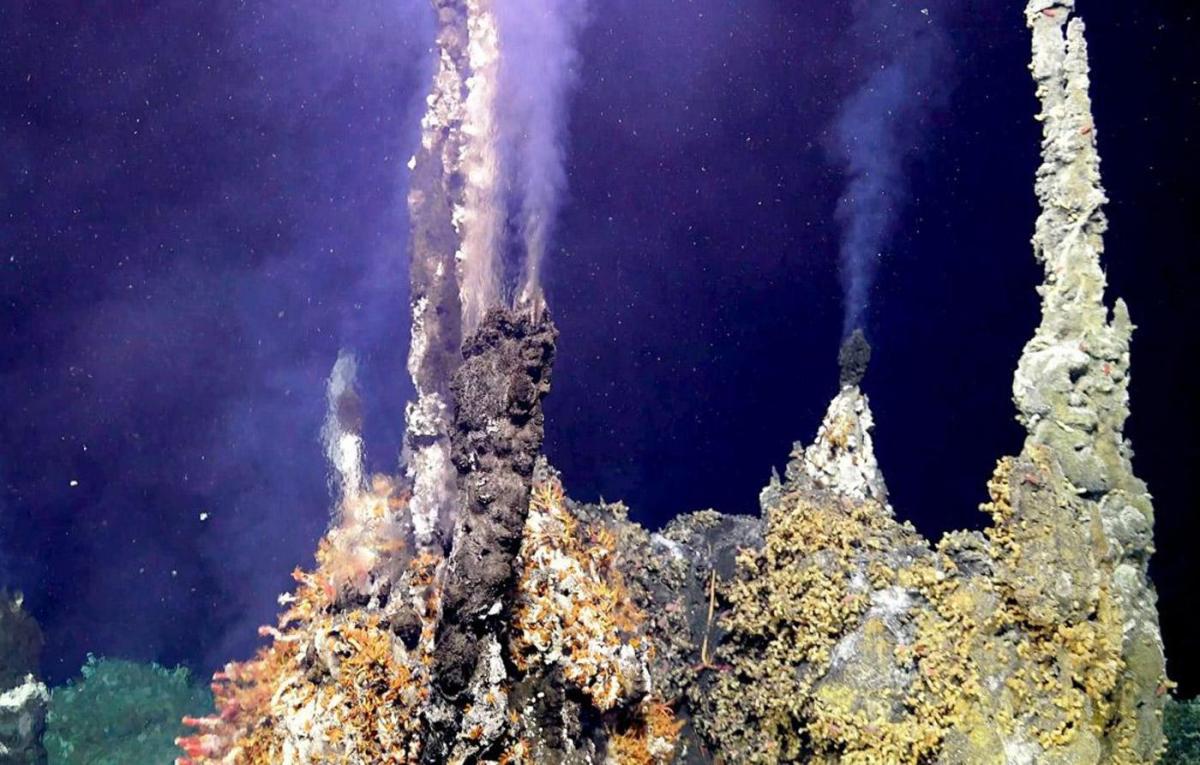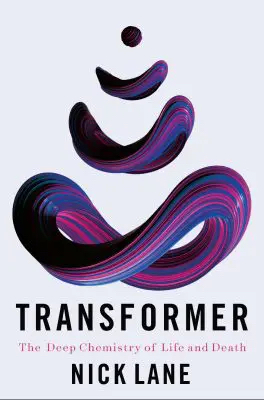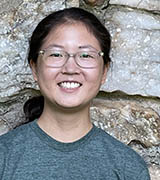On the Origin of Life
Scientist and Author Nick Lane Provides His Unique Perspective
BY VICTORIA TONG, OD

D. KELLEY, UNIVERSITY OF WASHINGTON/NSF-OOI/WHOI
Nick Lane posits that deep-sea hydrothermal vents provided an ideal environment in which the first cells could have emerged. Shown: hydrothermal system at Axial Seamount.
Four billion years ago, life sprang up from a nonliving Earth. Perhaps the source of life was a “warm little pond” that Charles Darwin mused about more than a century and a half ago, teeming with all the necessary chemical ingredients for the first living organisms to form. Or perhaps life preexisted in the universe, and space-hardy microorganisms arrived on our planet via a meteoroid one fateful day.
Nick Lane, professor of evolutionary biochemistry at University College London, favors a different idea. Lane, author of five books exploring the origins and evolution of life, posits that deep-sea hydrothermal vents provided an ideal environment in which the first cells could have emerged.
Lane presented support for this theory of abiogenesis to an audience gathered in the Lipsett Amphitheater in Building 10 on June 26. The event, sponsored by the Demystifying Medicine course series, the Foundation for Advanced Education in the Sciences, and the Office of Intramural Research, included a reception and book-signing for his latest book, Transformer: The Deep Chemistry of Life and Death.
Lane is the first to admit to the unorthodoxy of his ideas. After summarizing his hypothesis—that electricity drives metabolism, which gives rise to genes—he prefaced his deeper dive into the biochemical underpinnings of his theory with a disclaimer: “It's not the predominant idea in the field,” he said. “I have to warn you upfront that this is slightly heretical.”

UNIVERSITY COLLEGE LONDON
Nick Lane is a professor of evolutionary biochemistry at University College London and author of five books exploring the origins and evolution of life.
Yet Lane builds a solid case for his argument supported by scientific evidence, including experiments he and his research group have carried out, which he detailed in his lecture.
Central to Lane’s work is the idea that life is governed by the flow of energy. This is as true now as it was billions of years ago, when hydrothermal vents on the ocean floor jetted out highly alkaline fluid, creating a pH gradient after colliding with the acidic ocean water. This pH gradient provided the energy required to drive forward a reaction between the hydrogen gas bubbling out of the vents and the carbon dioxide found in the early oceans, forming molecules vital to life such as lipids, amino acids, and sugars.
In the lab, Lane and his group have been able to simulate this process using a microfluidic chip with acid and alkaline channels flowing through it, which supplies enough energy to drive the reduction of carbon dioxide to other organic molecules. They have also shown that protocells with a lipid bilayer membrane will spontaneously form from a mixture of fatty acids under heated alkaline conditions like those in hydrothermal vents.
Puzzling out how metabolism emerged from these protocells is another area of Lane’s research. Over the past seven to eight years, he and several other research groups have worked to replicate a core set of metabolic pathways shared by all life on Earth, including both bacteria and archaea.
These reactions include glycolysis and gluconeogenesis, processes in which glucose is broken down and formed; the pentose phosphate pathway, which produces precursors for nucleotide synthesis; the Krebs cycle, which generates and stores energy in the form of adenosine triphosphate; and the synthesis of various amino acids.

CREDIT: NIH WALS OFFICE
Lane presented support for the theory of abiogenesis to an audience gathered in the Lipsett Amphitheater in Building 10 on June 26. The event, sponsored by the Demystifying Medicine course series, the Foundation for Advanced Education in the Sciences, and the Office of Intramural Research, included a reception and book-signing for his latest book, Transformer: The Deep Chemistry of Life and Death.
Although they have not replicated all these pathways from beginning to end, they have demonstrated that many intermediate steps will occur spontaneously. “It’s no longer hand-waving; this chemistry is favored chemistry. It really will happen if the conditions are right for it,” Lane said.
With the right pieces in place, Lane believes that genes would have naturally arisen from those fundamental metabolic processes, not the other way around.
Although Lane’s theory does not answer all the questions about how life originated, he has provided a feasible pathway for how the earliest forms of life could have evolved from the unique environment provided by hydrothermal vents deep under the sea.
“There's a lot of missing holes there,” he said. “But there’s also a few markers of a possible path that I would say it's worth continuing in the lab with these experiments because I think we can nail it.”

Victoria Tong, a Pathways editorial intern at The NIH Catalyst, is a sophomore at the University of California at Los Angeles and expects to major in chemistry. She was the editor of the student newspaper at Richard Montgomery High School in Rockville, Maryland. In her free time, she enjoys playing tennis, solving crossword puzzles, and scoping out new restaurants.
This page was last updated on Thursday, September 7, 2023
